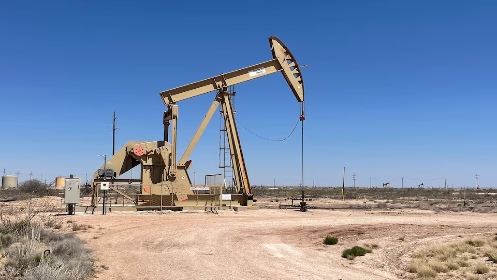Oil prices were little changed on Tuesday, awaiting further price direction from OPEC’s monthly report, while investor disappointment over China’s latest stimulus plan and oversupply concerns limited gains.
Brent crude futures rose 38 cents, or 0.5%, to $72.21 a barrel, by 0944 GMT. U.S. West Texas Intermediate crude futures were up 36 cents, or 0.5% at $68.40 a barrel.
“In a flat price environment that is stalled, supply and demand become even more magnified and at present it would appear that oil market participants do not like what they see,” said John Evans, analyst with oil broker PVM.
Both contracts had fallen by more than 5% over the previous two trading sessions.
Deflationary risks from China, as well as the lack of concrete fiscal stimulus measures from Chinese policymakers to spur demand, are weighing on sentiment, said Kelvin Wong, senior market analyst at OANDA.
“On the supply side, it will be the ‘Trump Trade’ narrative that focuses on making the U.S. the major supplier of shale gas, as the current North Dakota Governor Doug Burgum, a pro-oil drilling advocate, is among the short-listed candidates to be named as Energy Secretary under the incoming Trump administration,” he said.
Beijing unveiled a 10-trillion-yuan ($1.4-trillion) debt package on Friday to ease local government financing strains, as the country faces pressure from the re-election of Donald Trump as U.S. president, who has threatened more tariffs on Chinese goods.
But analysts said it fell short of the amount needed to boost economic growth.
The world’s biggest oil importer also released inflation data over the weekend, which showed consumer prices rose at the slowest pace in four months in October while producer price deflation deepened.
Further price direction may come from the Organization of Petroleum Exporting Countries’ monthly report later.
The market will be looking out for downward revisions in demand forecasts from the group’s outlook through 2025, which would add further pressure on prices.
The U.S. dollar held around four-month highs on Tuesday, as it is expected to benefit from Trump policies that are likely to keep U.S. interest rates relatively higher for longer.
Markets are also bracing for further signals from U.S. inflation data and Federal Reserve speakers this week.





